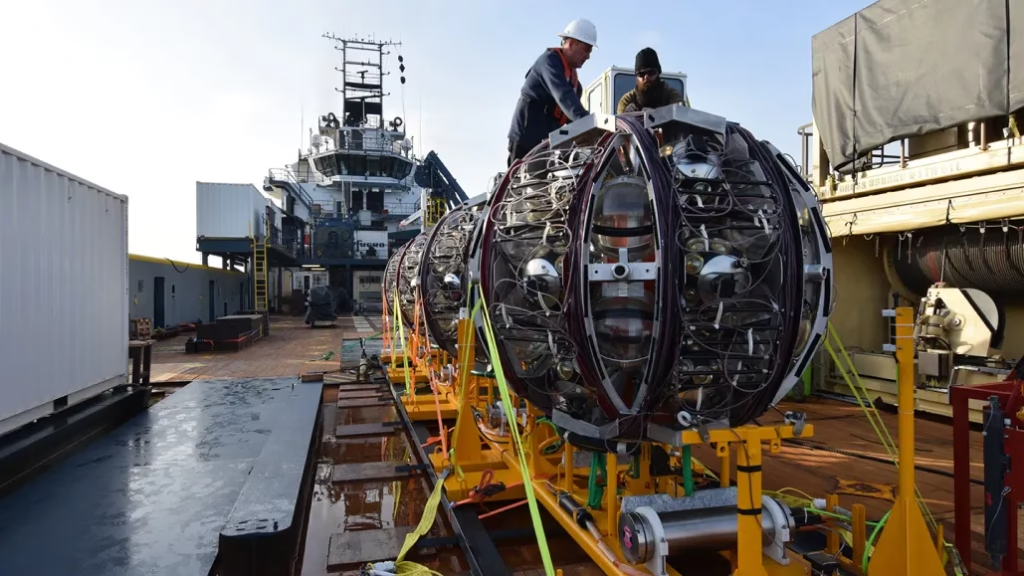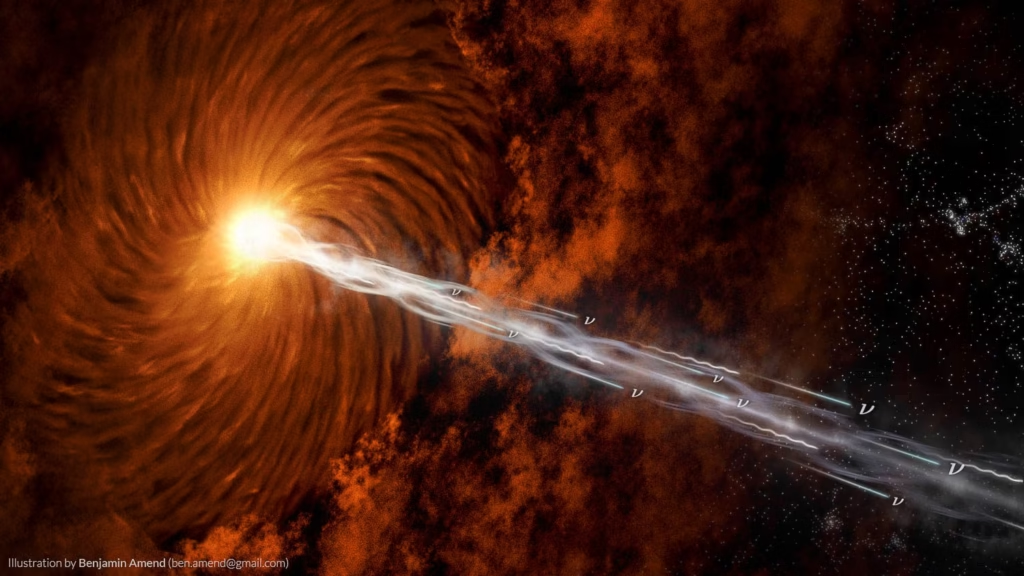Mediterranean Sea Reveals Secrets, Scientists Detect the Most Powerful ‘Ghost Particle’ Ever!

A New Frontier in Neutrino Astronomy
Astronomers using a giant network of underwater sensors in the Mediterranean Sea have made a monumental discovery — the highest-energy cosmic neutrino, or “ghost particle,” ever detected. This incredible discovery was made by the KM3NeT Collaboration, a group of over 360 scientists from around the globe. The neutrino, which is 30 times more energetic than any previous ones detected, offers new insights into the universe’s most extreme phenomena.

Credits: CNN
What Are Neutrinos?
Neutrinos are subatomic particles that are often called “ghostly” due to their ability to pass through any form of matter without changing. These elusive particles are produced in vast quantities by some of the universe’s most energetic processes, traveling through stars, planets, and galaxies with almost no mass. Because they are so difficult to detect, studying neutrinos can provide valuable information about distant cosmic events, such as supernovae, black holes, and gamma-ray bursts.
The Record-Breaking Neutrino
The neutrino discovered by the KM3NeT team, named KM3-230213A, is a game-changer. With an energy level of 220 million billion electron volts, this neutrino is a staggering 30,000 times more powerful than the Large Hadron Collider (LHC) at CERN, the world’s most advanced particle accelerator. To put that into perspective, this single particle carried the energy equivalent to the energy released by splitting one billion uranium atoms.

Credits: Science News
Tracking Neutrinos Underwater
Detecting neutrinos is no easy feat, as they rarely interact with matter. However, they do produce a faint bluish light when they interact with water or ice. The KM3NeT project, which began installation in 2015, uses a network of sensors placed deep in the Mediterranean Sea to detect these particles. The system, which is still under construction, detected the neutrino as it passed through the ARCA (Astroparticle Research with Cosmics in the Abyss) detector, located off the coast of Sicily at a depth of over 11,000 feet. The particle’s path triggered signals in over one-third of the active sensors, marking a significant achievement in neutrino detection.

Credits: Jokke
Uncovering Cosmic Mysteries
This detection is not only important because of the particle’s immense energy, but it also opens up new possibilities for understanding some of the universe’s most mysterious and extreme phenomena. Researchers believe the neutrino may have originated beyond the Milky Way galaxy, possibly from a supermassive black hole, a gamma-ray burst, or the remnant of a supernova. These highly energetic events may be capable of producing neutrinos that travel across vast cosmic distances, providing valuable clues about the workings of the universe.

A Step Toward Understanding Cosmic Rays
The discovery of such a high-energy neutrino is also crucial for understanding cosmic rays — the most energetic particles in the universe. Cosmic rays bombard Earth from space and are thought to be generated by powerful particle accelerators, far beyond the capabilities of human-made devices like the LHC. Neutrinos may hold the key to unraveling the origins of these cosmic rays, and further research could reveal the hidden sources behind them.
The Road Ahead for Neutrino Astronomy
While the KM3NeT team has already made significant strides, much more work remains to fully understand the origins of this unprecedented neutrino and others like it. The discovery of 12 potential blazars, galaxies with ultra-bright centers, adds to the mystery. As more neutrinos are detected, astronomers hope to build a clearer picture of the extreme astrophysical events that create these enigmatic particles.
This breakthrough in neutrino detection marks a new chapter in neutrino astronomy, providing an exciting window into the universe’s most powerful and distant phenomena. As the KM3NeT network continues to grow and evolve, it promises to unveil even more cosmic secrets hidden deep beneath the ocean’s surface.






